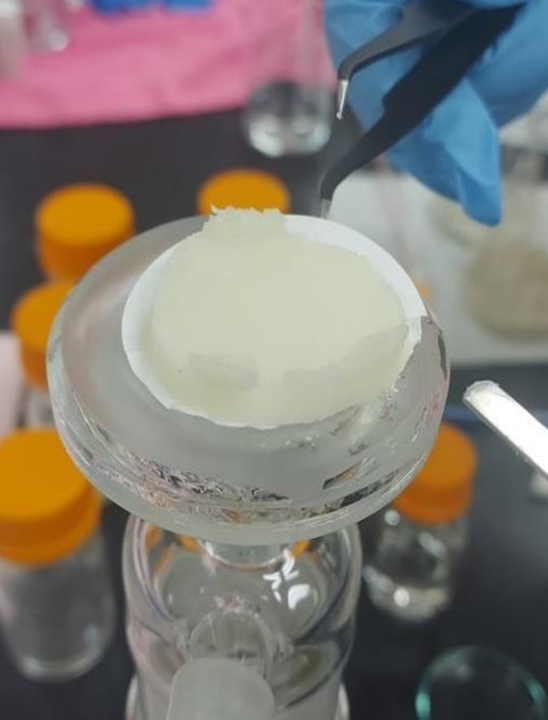Since microplastics continue to pose threats to the environment and food safety of fish for human consumption, researchers are implementing a project to investigate microplastics on milkfish.

Recovered Polyethylene microplastics after digestion in 12% Potassium hydroxide (KOH) solution at 40°C for 72 hrs. (Image credit: DOST-ITDI Project Team)
Microplastics are global pollutants. As products of massive modern industrialization, they are seen to be instrumental to the country’s increasing post-consumer wastes.
Milkfish, one of the commonly consumed fish, plays a crucial role in the country's economic growth. However, as milkfish aquaculture sites remain unexempted to microplastic contamination, it raises substantial health risks to consumers.
A project led by the Industrial Technology Development Institute of the Department of Science and Technology (DOST-ITDI) is being implemented to develop an optimized protocol for microplastics isolation and detect the level of microplastic contamination in freshwater, marine, and brackishwater milkfish.

Density separation for Polystyrene (PS) microplastics from freeze-dried meat samples. (Image credit: DOST-ITDI Project Team)
The project, “Method Optimization of Digestion and Extraction of Microplastics in Milkfish (Chanos chanos),” is investigating the occurrence and spatial distribution of microplastics in milkfish harvested from freshwater, marine, and brackish-based aquafarms. It is being funded by the Philippine Council for Agriculture, Aquatic and Natural Resources Research and Development (PCAARRD) of DOST.
Results of the study will determine whether the current level of microplastic contamination is within acceptable limits for human consumption and food safety. Findings will influence the development of policies to mitigate potential threats.
In its first year of implementation, the project initially collected milkfish samples from various culture sites in the country. Individual milkfish samples were randomly selected from marine, brackish, and freshwater fish cages, fish pens, or fish pond aquafarms.
The study hopes to pinpoint and correlate potential sources and distribution patterns of microplastics in milkfish across these various water habitats. It will also systematically monitor microplastic ingestion and evaluate its associated hazards and ecological risks.

Gel-like consistency of digested meat sample meat samples. (Image credit: DOST-ITDI Project Team)
Currently, microplastic studies in the country focus on their occurrence in water bodies and marine sediments. However, only a few researches identified them in living organisms such as fishes and bivalves. Thus, the ongoing project seeks to apply the country’s existing procedures for microplastic detection, specifically in milkfish.
Policy-makers, small-scale aquaculture sector, and all Filipino fish consumers will benefit from the results of the project as it particularly increases awareness on the implications of plastic litter in aquatic resources. Potential solutions that may mitigate microplastic contamination of fishes are also being explored through the project.

